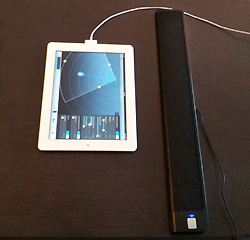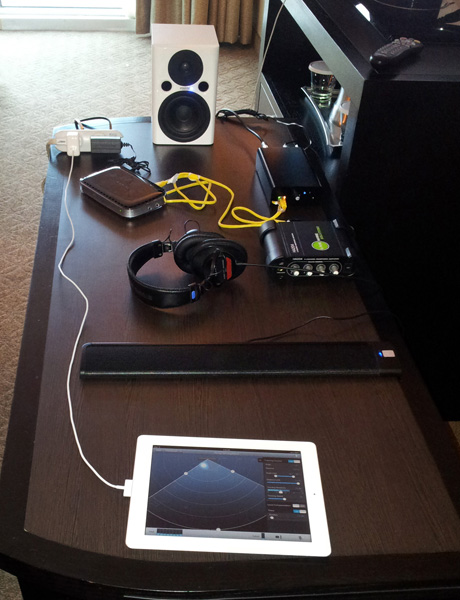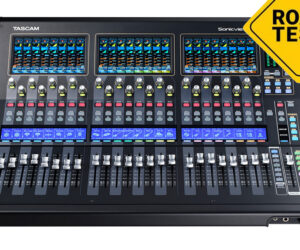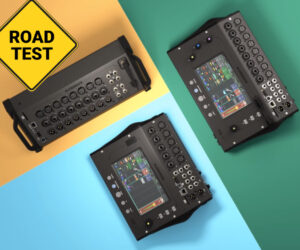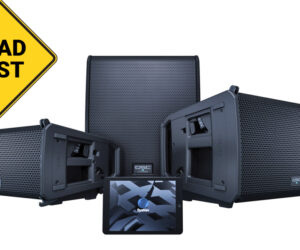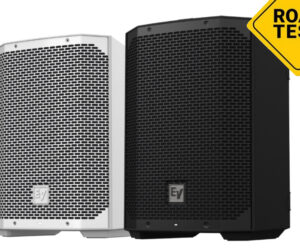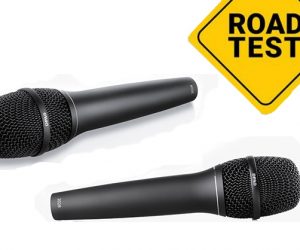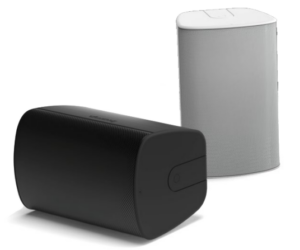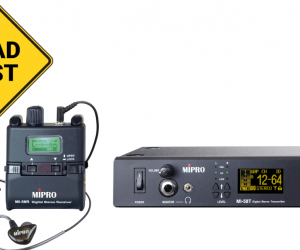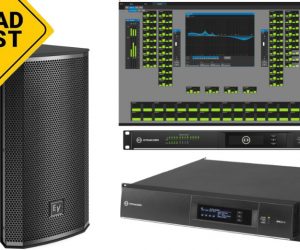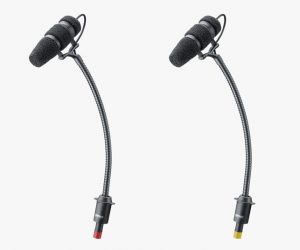In late January, I was invited to a private demo of what looks to be some cool, and useful, new technology that blends advanced processing with a low-profile array of microphones. The AM-1 from TOA Electronics is the result of a multi-year development process and will be released toward the beginning of Spring, 2014.
The AM-1 is a microphone system that shifts its coverage pattern in real time as a person moves away from “on axis” to one side or the other –- and even adjusts its gain as that person comes closer or farther away from the mic.
Primary applications are live theatre, houses of worship, vocal reinforcement at conferences, university lecture halls, and similar speaking applications. When placed on conference tables, podiums, or on the floor, the multi-mic array unit is so unobtrusive that it doesn’t obstruct sight lines or appear on camera.
The system consists of the mic array, a controller/power unit, and user software that runs on an iPad or PC. The array is made up of eight spaced cardioid microphone elements within an elongated rectangular housing that measures about 19 inches long by 2.6 inches wide, and less than an inch in height.
The active upper surface of the mic array has an acoustically open windscreen. It’s only control is a touch-sensitive mute switch with an associated blue LED indicator. A single cable at the rear of the housing connects the array with the controller unit.
The controller unit processes the array’s mic elements to steer their pattern, and it also provides phantom voltage to power those elements. The controller has both an analog output, selectable between +4 dBu, -10 dBV, and -30 dBu. along with a rotary output level control, and a AES/EBU 24-bit digital output. An RJ-45 connector allows direct connection to a PC or to a network hub/WiFi router for an iPad. The controller can be remotely located from the mic array to a distance of 230 feet (70 meters) via shielded, twisted-pair cable.
Frequency response is stated as 150 Hz to 18 kHz, with a S/N ratio of >90 dB. At a distance of 20 inches, maximum input SPL is 100 dB; this system is designed to be used at arm’s length away or more. The mic array’s steerable horizontal coverage angle is 50 degrees (in “array” mode), and its vertical coverage is 90 degrees. In “cardioid” mode, horizontal coverage is 180 degrees.
The dedicated GUI, which I saw on an iPad, features numerous parameter controls along with a display of the coverage window of the mic array.
The coverage apex is at the array itself, reaching outward like a pie wedge toward the people speaking. When a person speaks, the audio signal is triangulated and a lighted circle appears on the screen showing that person’s relative position and distance from the plane of the mic array – and the position becomes the acoustic center of the 50-degree mic pattern. When another person speaks, the circle goes to that position, along with the coverage. The experience is as if a shotgun mic is being pointed at each talker in turn, and is immediately responsive.
The “window” where the mic array automatically points its 50-degree coverage pattern can be adjusted from a wide (180-degree) to a fixed (0-degree) field, and that field can even be asymmetrical toward one side or the other. This flexibility allows the mic array to be positioned to capture one set of voices and not another, or to steer away from the coverage of a loudspeaker.
Switchable gain compensation can be set so that as a person moves closer or farther from the mic, the voice remains at the same relative loudness. Even with the gain compensation on and at a distance from the mic array that was farther than it was from the loudspeaker at the demo, the voice was picked up without feedback.
With the automatic triangulation, high gain-before-feedback, and unobtrusive profile, look for the AM-1 to be a very handy tool in reinforcing a moving presenter or multiple people talking in a variety of applications. Find out more about it here.
Gary Parks is a pro audio writer who has worked in the industry for more than 25 years, including serving as marketing manager and wireless product manager for Clear-Com, handling RF planning software sales with EDX Wireless, and managing loudspeaker and wireless product management at Electro-Voice.


